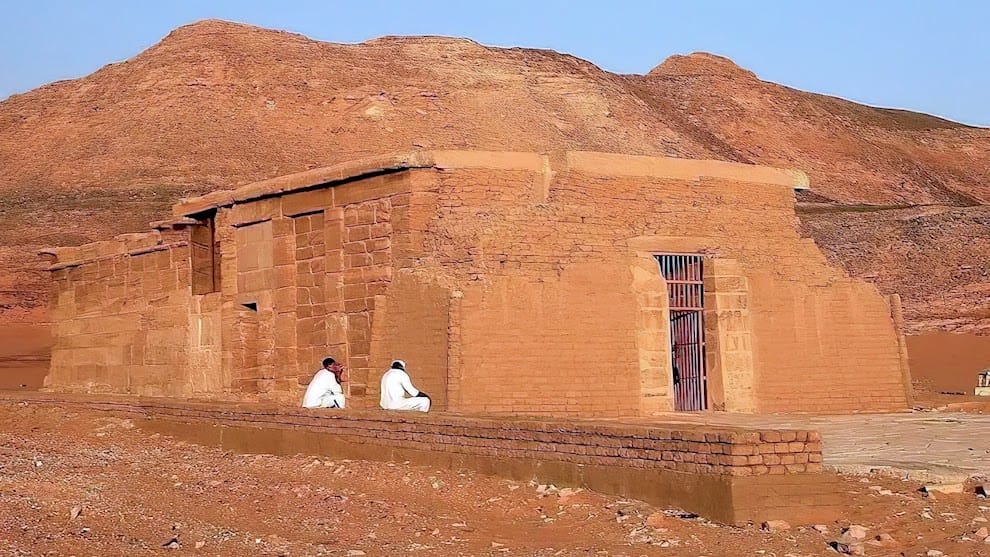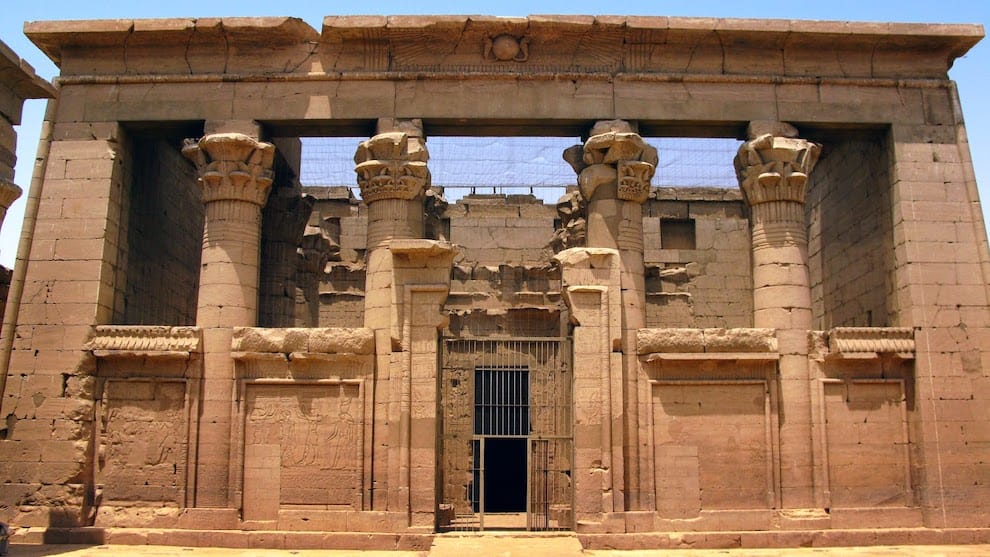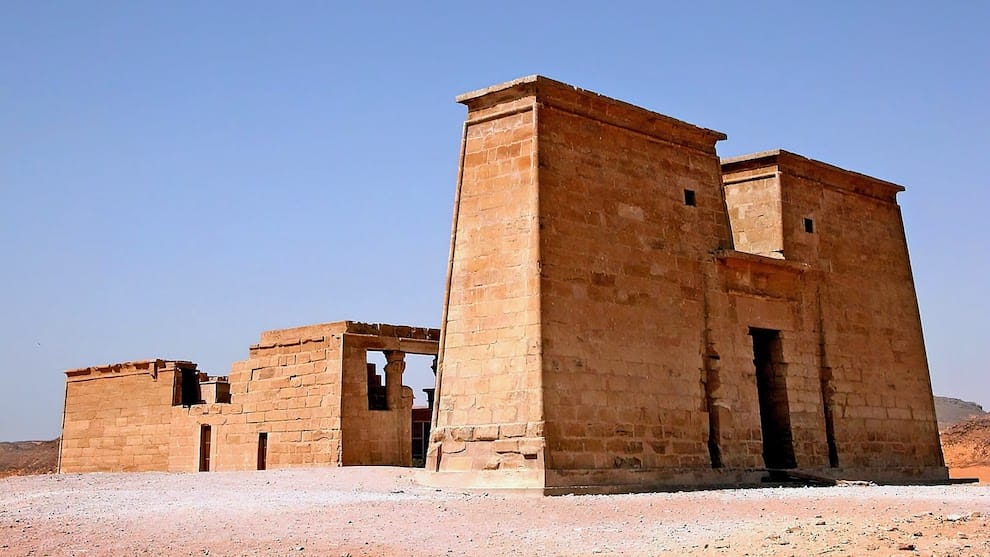Just over 100 miles south of Luxor and 30 miles north of Aswan is the stunning site known as the Temple of Kom Ombo. With its enormous and towering columns and beautiful reliefs and carvings, it is a wonderful way to experience the world of Ptolemaic Egypt. As one expert noted, the Temple of Kom Ombo is a “double temple constructed during the Ptolemaic period”. In other words, rather than a sanctuary, hall and other rooms dedicated to a single god, the Temple of Kom Ombo features two of each and these are dedicated to two different gods.
Designed in a Greco-Roman style, the southern portion is dedicated to Sobek, the crocodile god and god of fertility as well as the river. The second half is dedicated to the falcon god Horus protector of the king as well as god of the sky. It is also dedicated to his wife Tasenetnofret, and their son Panebtawy. This is very unusual, since Sobek is closely tied to the god of the underworld, Seth. However, Seth is an enemy of Horus. Yet, it is believed that this unusual blending of the two gods in one site had much to do with local theology.
For instance, it is believed that Sobek’s main sanctuary was in the area of Kom Ombo, which was also home to many crocodiles. This made life in the region quite treacherous and yet the ancient belief in totem animals led to the crocodile becoming an object of worship, and this lead to the worship of Sobek. The area’s ancient cemeteries have even yielded mummified crocodiles as evidence of this totem worship, and captive crocodiles were known to reside within the temple itself.
That is one unusual element about the Temple of Kom Ombo, but another is the symmetry of the temple, with everything aligned along a singular main axis. The twin entrances, halls and sanctuaries are aligned with this axis, and it is believed were tended to by two entirely separate groups of priests.
VISITING THE TEMPLE OF KOM OMBO COMPLEX
With its position on the banks of the Nile, it would be ideal to approach the site by water, and many do just that. Many of the Nile cruises pay a visit to the site and include them on their itineraries. There are also private felucca boats that will bring travelers heading to or from Aswan. Travelers can take the train from Aswan or Luxor, and private taxis are also an easy way to pay a visit to the Temple of Kom Ombo.
One thing all travelers will want to do before their arrival or before heading to the temple, is find a private guide or join a professional tour in order to get the very most out of the visit. There is a lot to see here, and you don’t want to miss the key points or the specific areas you hoped to see for yourself during a visit.
WHAT TO SEE WHEN VISITING THE TEMPLE OF KOM OMBO
Time has not been kind to much of the site, and the original outer pylon has only a single half standing. As you enter, you reach the Forecourt and it too has been a bit decimated by natural disasters (earthquakes) and other problems. Today, only the lower halves of the 16 columns remain, but they offer beautiful reliefs and imagery. There is a stone screen along the far side of the Forecourt and it features images of Thoth and Horus along with Sobek.
Passing through this area you reach the Vestibule with its ten columns topped with beautiful palm capitals and walls covered in reliefs. The ceiling above features painted birds and vultures that are truly stunning. Next comes the Hypotstyle Hall with its ten columns also topped with floral motifs and covered with images of the pharaoh communing with the gods. Look between the doors heading into the rear area of the temple and you see a crocodile of Ombos!
Also of note in the hall is a relief (on the northern wall) depicting Horus presenting the pharaoh with a sword, and nearby stand Cleopatra VII (his sister) as well as his wife Cleopatra.
Three antechambers remain off the hall and lead to the inner temple. Some truly beautiful reliefs remain hear and it is significant to note that the ceilings of each subsequent antechamber are higher than the previous. There are some small rooms off to the side, but it is the relief on the rear wall of the outermost antechamber that many come to see. It depicts Philometer with Cleopatra, and they stand in front of Khons, the moon god. Nearby are Sobek, Horus and Ombos.
Last comes the Sanctuary reached through the last antechamber and it is divided into areas for worshipping each god. Also off the Vestibule is an Inner Passageway where there are also impressive reliefs. The outer passage walls are covered in reliefs of Emperor Trajan, and it is here that you find one of the most amazing “extras” at Kom Ombo.
NICE EXTRAS ABOUT A VISIT TO TEMPLE OF KOM OMBO
In addition to the areas of the Temple of Kom Ombo already mentioned, you may want to head to the rear of the structure in the passageways surrounding the main area. Here you can spot what has become a rather controversial and stimulating subject of conversation between scholars and enthusiasts.
The reliefs in this area clearly depict medical instruments such as scalpels, forceps and even medicine bottles. They are part of an image of two female gods seated on birthing chairs. The date of the carvings means that Egyptians already had some of the most advanced medical knowledge in the world by the era of the Ptolemies. If you cannot easily find them on your own, be sure to ask your guide to help you locate them.
If you are not part of a river cruise and can time your visit according to your own schedule, it is best to avoid the 10Am to 4PM surge of visitors. Arriving well before 9AM gives you a lot of peace and quiet to wander the site and arriving at 4:30 PM does the same. Note that there is an admission fee to enter the site.
If you plan your visit to coincide with a Tuesday or Thursday, you can also savor a truly unique experience – the camel market at Daraw just a few miles away. There is also a very reputable restaurant near the site and one noted for its authentic Egyptian dishes. The Cafeteria Venus serves cold drinks and tasty meals in a quiet and tranquil garden just a short distance (north) of the Temple of Kom Ombo.
Unique and unforgettable, the remarkable Kom Ombo site must be added to any list of must see sites in Egypt.




